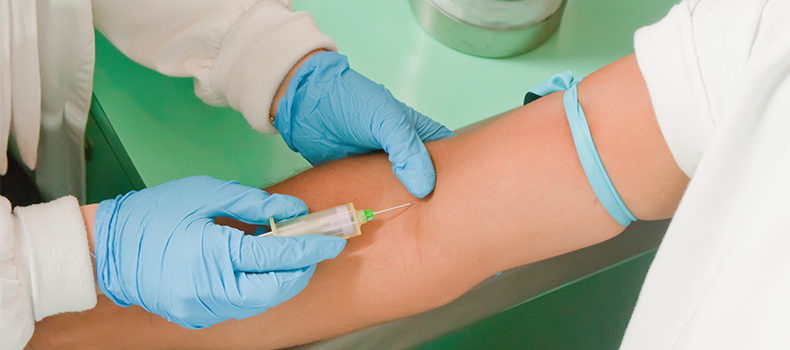Everything You Need to Know About Phlebotomy Tests: Tips, Preparation, and What to Expect
If you’re scheduled for a phlebotomy test, you might feel a mix of anxiety and curiosity. Whether its for routine health screening, diagnostic purposes, or monitoring a medical condition, understanding what phlebotomy involves can help you feel more prepared and confident. In this thorough guide, we cover everything you need to know about phlebotomy tests, including preparation tips, what to expect during the procedure, benefits, and practical advice to make the process smoother.
What Is a Phlebotomy Test?
Phlebotomy is the process of drawing blood from a vein, typically from your arm, for laboratory analysis. The blood samples collected are used to check for various health conditions, diagnose illnesses, monitor existing health issues, or assess nutritional status. The term phlebotomy test refers to any laboratory test that involves blood collection.
Common types of Phlebotomy Tests
There are many types of blood tests that fall under the umbrella of phlebotomy. Some of the most common include:
- Complete Blood count (CBC)
- Blood Glucose Test
- Lipid Profile
- Liver Function Tests
- Kidney Function Tests
- Thyroid Function Tests
- Blood Culture
- Blood Tests for Infections
- Vitamin and Mineral Levels
Benefits of Phlebotomy Tests
Undergoing blood tests offers numerous benefits, including:
- Early Detection: Identify potential health issues before symptoms appear.
- Accurate Diagnosis: Confirm or rule out medical conditions.
- Monitoring Chronic Conditions: Track disease progression or response to treatment.
- Personalized Care: help healthcare providers tailor treatment plans.
Tips for Preparing for a Phlebotomy Test
Proper preparation can make your blood draw smoother and more accurate. Here are essential tips to follow:
1. Follow Fasting Instructions Carefully
Some blood tests, such as glucose or lipid panels, require you to fast for 8-12 hours before the test.Always adhere strictly to your healthcare provider’s instructions.
2. Hydrate Well
Drinking plenty of water before your appointment can make veins more accessible and reduce discomfort during the draw.
3.Avoid caffeine, Alcohol, and Smoking
These substances can affect certain tests and should be avoided as instructed by your healthcare provider.
4. Wear Appropriate Clothing
Choose clothing with sleeves that can be easily rolled up to expose your arm.
5. Bring Necessary Documentation
Carry your ID, test orders, and insurance information if applicable.
6. Inform the Phlebotomist About Medications or Health conditions
Some medications or health issues might influence test results or require special handling.
What to Expect During a Phlebotomy procedure
Step-by-Step Process
- The phlebotomist will identify you and verify your details.
- You might potentially be asked to sit or lie down comfortably.
- The technician will apply a tourniquet around your upper arm to enlarge the veins.
- They will clean the puncture site with an antiseptic.
- A sterile needle is inserted into a vein, and blood is drawn into vials or tubes.
- onc enough blood is collected, the needle is removed, and the site is pressed with a cotton ball or gauze.
- A bandage is applied, and you are advised to remain still for a few moments to prevent bleeding or dizziness.
Possible Discomforts and Side Effects
- Soreness or bruising at the puncture site
- lightheadedness or fainting in some cases
- Rarely, infection or excessive bleeding
Practical Tips for a Pleasant Experience
- Relax and breathe normally during the blood draw.
- Inform the technician if you feel faint or uncomfortable.
- Stay hydrated before and after the test.
- Avoid vigorous activities promptly afterward.
Understanding Your Test Results
Laboratory results will typically be provided within a few days. Your healthcare provider will interpret the results based on your health history and symptoms.If your results are abnormal, further testing or treatment might potentially be needed.
Case Study: Real Patient Experience
| Patient | Test Conducted | Preparation | Outcome |
|---|---|---|---|
| Jane D. | Routine Blood Panel | Fasted for 10 hours, drank water | Swift procedure, no discomfort, results normal |
| Mark P. | Glucose Test | Fasted overnight, avoided caffeine | Experienced minor dizziness, advised to hydrate more next time |
| Lisa S. | Lipid Profile | Followed fasting instructions, wore loose clothing | Blood draw smooth, results indicated high cholesterol |
Conclusion
Understanding the essentials of phlebotomy tests can considerably alleviate anxiety and prepare you for a seamless experience. From proper prep to knowing what to expect, being informed empowers you to take control of your health journey. Remember to follow your healthcare provider’s instructions carefully, communicate openly with the phlebotomist, and view your test results as valuable insights into your well-being. With these tips and knowledge, you’re well-equipped to approach your upcoming blood test confidently and comfortably.
